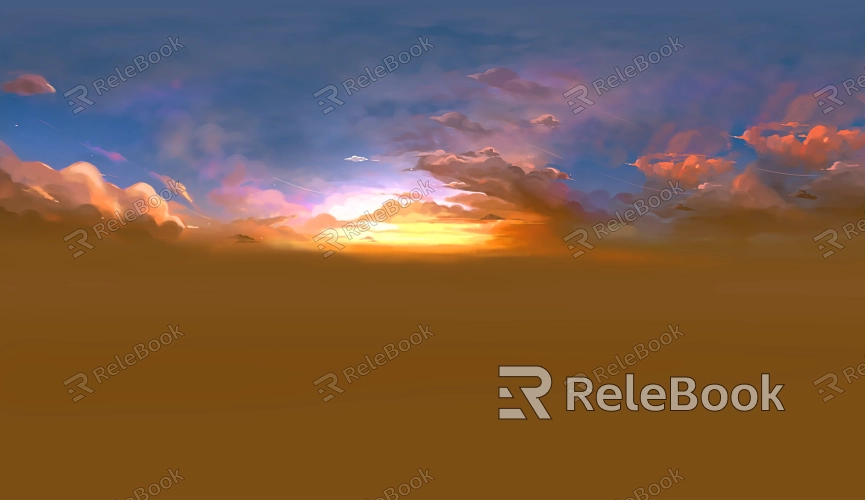What Is the Best Skydome HDR Texture for Outdoor Rendering
In outdoor scenes, Skydome HDR textures provide realistic lighting effects, greatly enhancing the overall lighting and shadow details. However, with so many options available, choosing the right HDR texture for your project can be a daunting task. Let’s walk through a few key points to help you find the best Skydome HDR texture for your outdoor rendering.

1. The Core Function of HDR Skydome Textures
The primary role of Skydome HDR textures is to deliver natural and dynamic light, adding realism to outdoor lighting.
Consistent Lighting: HDR textures capture a wide range of brightness levels, reducing overly bright or dark areas and ensuring even illumination throughout the scene.
Natural Light Transitions: These textures can simulate lighting changes at different times of day, such as morning, dusk, or midday, making them crucial for projects that need to show natural light variations.
High-Contrast Lighting: Unlike traditional LDR (low dynamic range) textures, HDR images retain more detail in both bright and dark areas, producing more realistic light and shadow effects.
2. Choosing HDR Textures Based on Scene Requirements
Different outdoor renderings require various HDR textures to achieve optimal results. Selecting the right texture not only improves the visual impact but also speeds up the rendering process.
Sunny vs. Overcast: For bright, sunny environments, textures with strong sunlight and clear skies can effectively recreate the desired lighting. For softer lighting in overcast scenes, HDR textures with cloud cover are more appropriate.
Day-to-Night Transitions: Projects that need to showcase changes from day to night, such as architectural visualizations with shifting light sources, benefit from HDR textures that capture the full spectrum of daylight to nighttime transitions. These textures can simulate everything from sunrise to sunset and even starry night skies.
3. The Impact of HDR Texture Resolution on Render Quality
The resolution of an HDR texture plays a key role in the level of detail and overall render quality. While higher resolution textures provide more detail, they also demand more system resources.
Balancing High and Low Resolution: Although high-resolution HDR textures offer more realistic lighting, in some real-time rendering scenarios, lower-resolution textures may suffice and significantly improve rendering speed.
Recommended Resolution: For most outdoor rendering projects, a minimum resolution of 4000x2000 pixels is recommended. For high-quality, detailed renders, resolutions of 8000x4000 or higher ensure outstanding lighting accuracy.

4. Setting Up HDR Textures in Software
Different 3D software platforms offer varying support and configuration methods for HDR textures. Knowing how to adjust HDR settings can help designers achieve the best possible rendering results.
3ds Max: Both V-Ray and Corona Renderer in 3ds Max support HDR lighting. Designers can tweak exposure and brightness based on the scene's requirements to ensure natural lighting transitions.
Blender: In Blender, both the Eevee and Cycles render engines support HDR textures. Cycles is ideal for projects requiring realistic lighting, while Eevee excels in fast, real-time rendering.
Cinema 4D: In Cinema 4D, HDR textures work well with global illumination, allowing for refined control of light bounces and detailed shadow effects.
Unreal Engine: Unreal Engine allows for quick loading and application of HDR textures. Designers can adjust brightness and exposure within real-time environments to easily achieve lifelike lighting effects.
5. Adjusting Exposure and Tone Mapping
Loading an HDR texture doesn’t automatically guarantee perfect lighting. Exposure adjustments and tone mapping are necessary to optimize the texture's performance.
Exposure Adjustments: Different render engines enable designers to manually adjust the exposure of HDR textures to avoid overexposed highlights or overly dark shadows. V-Ray and Corona, for example, have powerful exposure adjustment tools.
Tone Mapping: This feature allows better control over the contrast and brightness of HDR textures, helping to refine the lighting across the entire scene.
6. Free vs. Paid HDR Resources
There is a wide range of free and paid HDR sky textures available today. Designers can choose the appropriate resources based on their project budgets.
Free Resources: Many websites offer free HDR textures that are ideal for budget-conscious projects or those that require quick implementation.
Paid Resources: High-quality paid HDR textures often come with higher resolutions and more details, making them suitable for high-end projects that require exceptional lighting and shadow realism.
7. Relebook: Your Go-To Source for HDR Textures
If you find it overwhelming to choose from the vast array of HDR textures available, consider exploring Relebook. By visiting Relebook's texture library, you can easily access high-quality HDR sky textures tailored to your project’s needs. Relebook provides an extensive range of design resources, helping you quickly find the ideal HDR texture to enhance your design's visual impact.
Whether you’re working in 3ds Max, Blender, or Cinema 4D, Relebook offers high-quality HDR sky textures that will help take your project to the next level.

